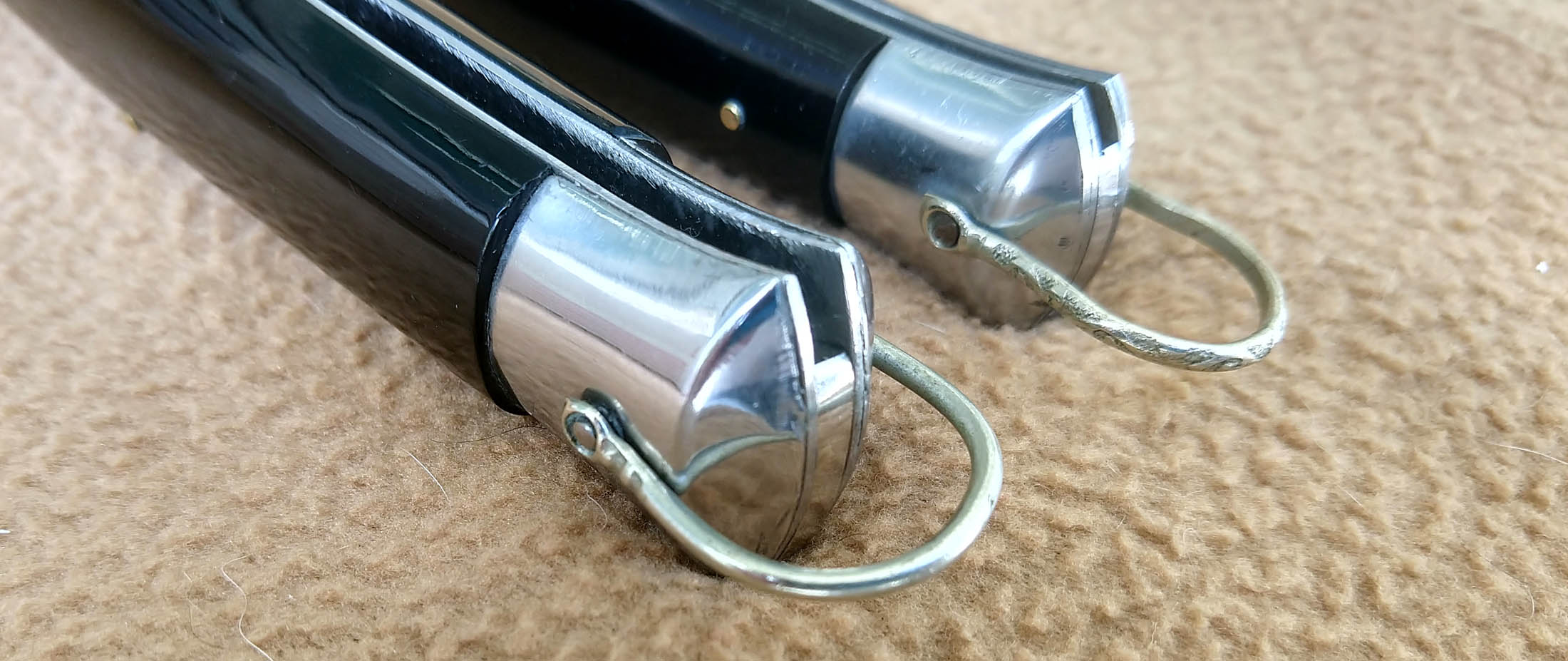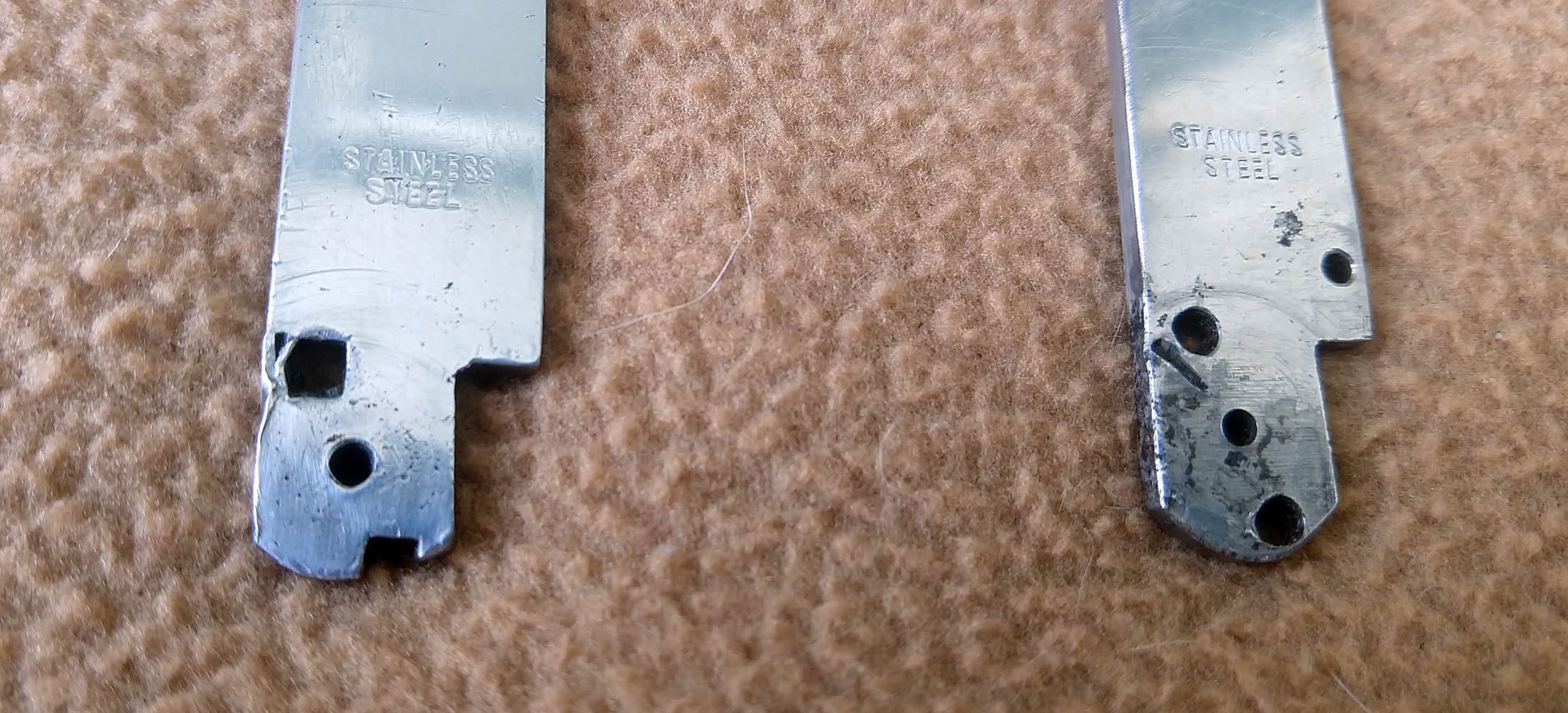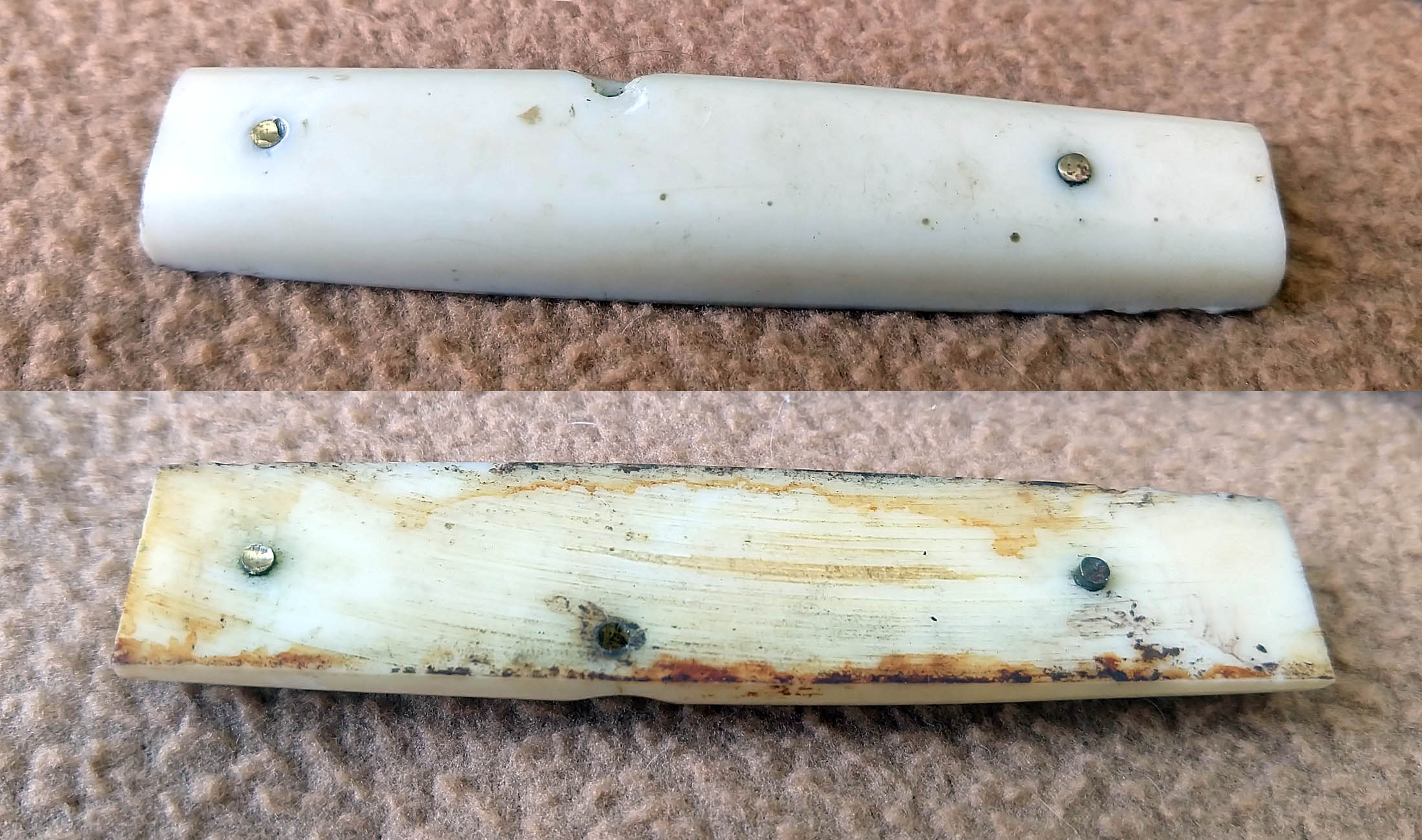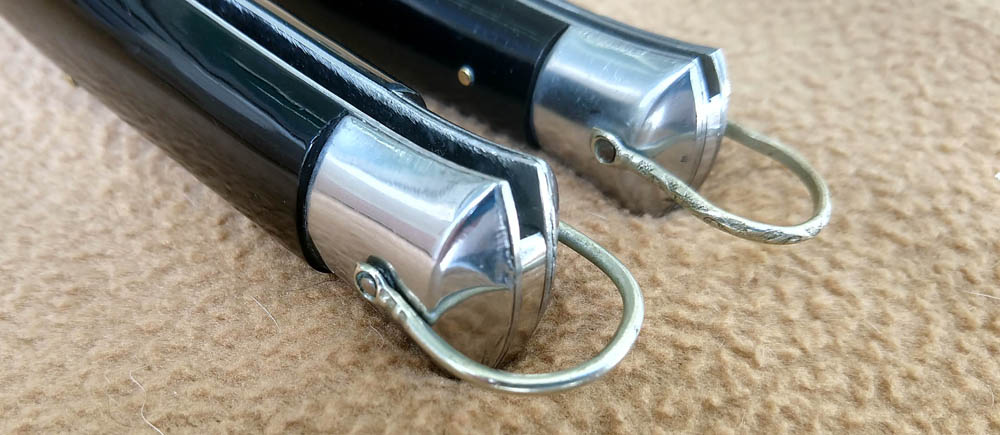You can take your rizzuto out for dinner and movie, but that is not dating it in the chronological sense and won’t help you to know if its an earlier or late one. Japanese rizzuto estileto milano knives were made in the 1960s and 1970s. Here in this guide, things are broken down into pre-rizzuto, 1st generation and 2nd generation. That is about as exacting as can be done. It is general but still pretty good. Certain characteristics will help you to know roughly where a given knife fits in the period of production.
Bale
The bale on a rizzy is an excellent indicator of chronology. Almost all rizzutos had fully filagreed bales. Some of the very early ones had a smooth bale which had just two grooves on each side by the pin. These are seen on single pin batwing and early step bolster knives. Could be other variants out there. The smooth bale is quite rare. In the image here, the knife on the left has the smooth bale.

Sear Catch
A round sear hole is far and away most commonly seen. Some of the early rizzutos had a square sear and square “hole.” If your knife has a square sear, it is an early one. The shape of the sear is an excellent indicator regarding age. In the image, the catch hole on the left blade is squared, though with some deformation, while the blade on the right has the far more common round sear catch.

Top Bolsters
Step and rectangular bolsters indicate an earlier made knife. If your knife has rounded bolsters, it is likely a 2nd generation build, with the converse being true.

Scale Material
The earlier knives tended to use bakelite for the scales and later ones tended to have the lighter acrylic that were hollow on the back. This is not a hard and fast rule as some early ones had the lighter acrylic. As always, good to consider all of the characteristics in total. The image shows a solid bakelite back scale. This came from a rizzuto with squared top bolsters, an early first generation knife.

Stamp Placement
The placement of the stamp or lack of a stamp, is a good indicator as to where a rizzy falls in terms of chronology. The earliest rizzutos had Rizzuto Estileto Milano stamped on the tang or no stamp at all. Much more common is the blade to have the REM stamp which is seen on both 1st generation and 2nd generation. If your knife has a tang stamp or no stamp (considering other factors of course) it is likely a very early rizzuto knife.

Guards
Rizzutos were made with batwing, mustache and standard guards. Any of these can be found on both 1st generation and 2nd generation knives. It is not a useful at all towards trying to determine if a given knife is early or later. It is also worth noting that guardless knives tend to be earlier first generation. Towards considering guard of a rizzuto estileto milano knife, the absence of guards is the only useful characteristic.

